Planning a Circle Tour of Lake Superior
For a great vacation, follow the shores of the world's largest freshwater lake.
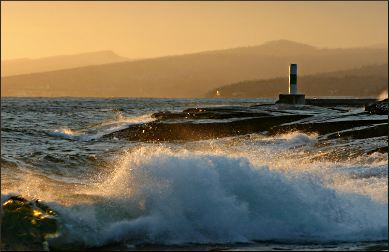
© Beth Gauper
Of all the vacations a person can take in this region, a Circle Tour of Lake Superior may be the best.
It appeals to waterfall watchers, lighthouse fans and history buffs. It's a magnet for kayakers and hikers.
It makes a great honeymoon and also a great family trip, because small children adore frequent stops at the many pebble beaches.
You can do it in a car or a motorcycle; you can camp or stay in motels. It's all things to all people, the perfect vacation for anyone who loves the outdoors.
However, planning the 1,300-mile Circle Tour isn't easy, because you need a new place to stay every night or two.
It would be nice to be able to stop when you feel like it, but in summer, you risk being turned away or getting the worst place in town.
So it's best to reserve a place for every night. Late winter and spring is the time to start nailing down plans.
I've gone on the Circle Tour twice, once in late June-early July and once in late July. I went clockwise the first time, counterclockwise the second.
Both worked well; how you plan depends on what you want to do and which festivals you'd like to catch along the way.
Here are tips to get you started.
For an overview of what you'll see on the trip, see Circling Lake Superior.
For a nine-day, eight-night itinerary, with a list of the best places to stay, see Lake Superior's greatest hits.
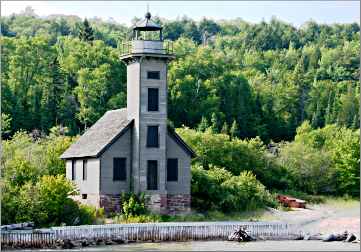
© Beth Gauper
When to go: In April, the waterfalls are roaring, there are no bugs and rates are low, but campgrounds and some businesses may be closed.
Late May and June are least crowded and rates usually are lower, but black flies are heaviest.
From mid-June, festivals, attractions and tours are at full throttle. Canadian schools don't get out until the end of June, so tourism is light there until then.
Blueberry- and thimbleberry-picking season starts in late July. On the south shore, swimming is best in August.
Many people like to visit in September, when weather still is good, traffic is lighter and bugs are mostly gone.
Fall colors can be spectacular — expect peak from the end of September to mid-October — but weather may be chilly and even blustery.
In Ontario, Fort William and campgrounds at parks along Lake Superior close after the first week of October.
How to plan: First, get Lake Superior magazine's map with mileage chart. You can download it or pick it up free at information centers.
It's also included in the annual Travel Guide, which is nice to have. The guide is free with a magazine subscription or available at newsstands, bookstores or the magazine's store in downtown Duluth.
Decide how much time you want to spend driving each day. Then, see if there's an event you want to catch and build your itinerary around that.
Annual events: Duluth is very popular in summer, so plan early if you want to spend the night. The entire town is full for Grandma's Marathon in June, and nearly every other weekend, too.
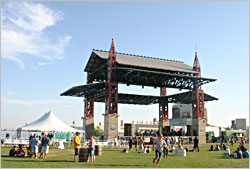
© Beth Gauper
Other popular events include the Duluth Airshow and the Bayfront Blues Fest in August.
In Hancock and Houghton, Bridgefest is in mid-June.
People who like to watch Great Lakes freighters should be in Sault Ste. Marie, Mich. the last weekend of June for Soo Locks Engineers Day, when the public can walk across the lock walls. The International Bridge Walk to Sault Ste. Marie, Ont., traditionally is the last Saturday in June. The Sault Tribe of Chippewa Indians Powwow is the first weekend of July.
Canada Day is July 1 and celebrated in Canadian towns everywhere. In the United States, the same goes for the Fourth of July.
In Wisconsin's Apostles, Madeline Island has a fun parade on July 4, followed by historical figures giving patriotic speeches.
Near Bayfield, the Red Cliff Band of Lake Superior Chippewa holds its traditional powwow over the Fourth of July. The Festival of Arts is the first weekend after Labor Day, and Apple Festival is the first weekend of October (reserve accommodations far ahead).
In Thunder Bay, events include Canada Day on July 1. There are many big events at Fort William Historical Park, including the Great Rendezvous in July and Anishinaabe Keeshigun in August.
In Grand Marais, Minn., watch for the Arts Festival in July and Fisherman's Picnic the first weekend of August.
In Marquette, the Hiawatha Traditional Music Festival is in July, Blueberry Festival is the last Friday in July, Art on the Rocks is the last weekend of July, HarborFest is in late August and Blues Fest is Labor Day weekend.
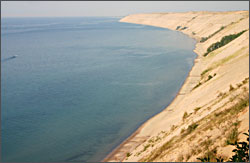
© Beth Gauper
Near Nipigon, Ont., the Live From the Rock folk festival is in mid-August.
In Grand Portage, the Rendezvous and Powwow is the second weekend of August, and the surrounding area books up a year in advance.
In White River, Ont., the Winnie The Pooh Festival is in mid-August.
In Copper Harbor, the Copper Harbor Trails Festival is Labor Day weekend.
In Superior, Wis., the Lake Superior Dragon Boat Festival is in late August.
Paradise, Mich., near the Great Lakes Shipwreck Museum on Whitefish Point, celebrates Wild Blueberry Festival is in mid-August.
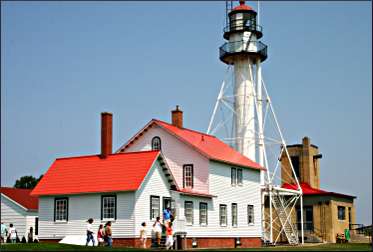
© Beth Gauper
In Ontonagon next to Porcupine Mountains Wilderness State Park, CopperFest is in late July. In Porcupine Mountains Wilderness State Park on the U.P., the Porcupine Mountains Music Festival is in late August.
Crossing borders: U.S. citizens 16 and over need a passport or passport card. For details and updates, check regulations on travel to Canada.
Residents of Minnesota and Michigan also can get an enhanced driver's license that will allow them to reenter the United States.
Children need a birth certificate or other proof of citizenship. If you're bringing a child who is not your own, you need notarized consent from both parents.
And don't bring the family pit bull — Ontario bans pit bull terrier breeds.
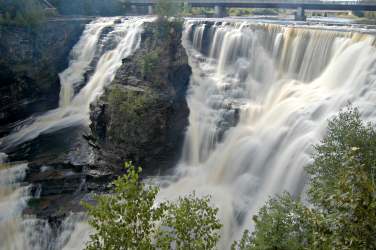
© Torsten Muller
Motorcyclists: Helmets are required in Michigan and Ontario. If you try to cross the Canadian border without one, you'll be turned away.
Bicyclists: It's a long slog on the more remote stretches in Ontario, especially between Marathon and Sault Ste. Marie. People do it, but it doesn't look fun.
To do a partial Circle Tour on the less-isolated southern part and also see Isle Royale, take the ferry from Grand Portage, Minn., to Rock Harbor and then another ferry to Copper Harbor, Mich.
For more, see Exploring Isle Royale.
Cruise ship: It's not exactly a Circle Tour, but Viking Cruises offers a cruise from Thunder Bay to Milwaukee, with stops in Duluth, Bayfield, Houghton, the Soo Locks and Mackinac Island.
Craft beer: Some of the many craft breweries can be found along the Lake Superior Ale Trail.
Camping: Campsites can be reserved 120 days in advance in Minnesota state parks, five months in Ontario provincial parks, six months in Michigan state parks and 11 months in Wisconsin state parks.
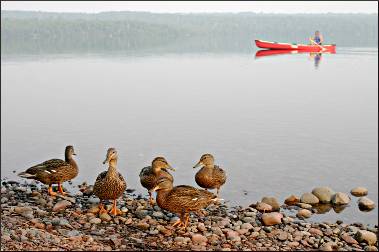
© Beth Gauper
State-park campgrounds along Minnesota's North Shore are full nearly every day in the summer and weekends in fall.
In other places, tent campers can find a place without reserving, but it is best to have one on weekends, especially holiday weekends. The first weekend of each summer month is a holiday weekend for Canadians, and many go camping.
Camping fees in Ontario parks as well as daily vehicle permits cost more than in United States parks.
In Pictured Rocks National Lakeshore, camping reservations are required, including the backpacking sites along the Lakeshore Trail.
In Ontario's Pukaskwa National Park (pronounced PUCK-a-saw), campsites at Hattie Cove campground are first-come, first served. It's 10 miles off the Trans-Canada Highway east of Marathon.
Four parks also have yurts, cabins and/or lodges:
Sleeping Giant Provincial Park, east of Thunder Bay, has five three-bedroom cabins.
Pancake Bay Provincial Park west of Batchawana Bay, Ont., has five yurts.
Tahquamenon Falls State Park, near Sault Ste. Marie, has a camper cabin and a three-bedroom lodge.
Porcupine Mountains Wilderness State Park on the west end of the Upper Peninsula, has four yurts, 19 rustic cabins and a four-bedroom lodge on the lake.